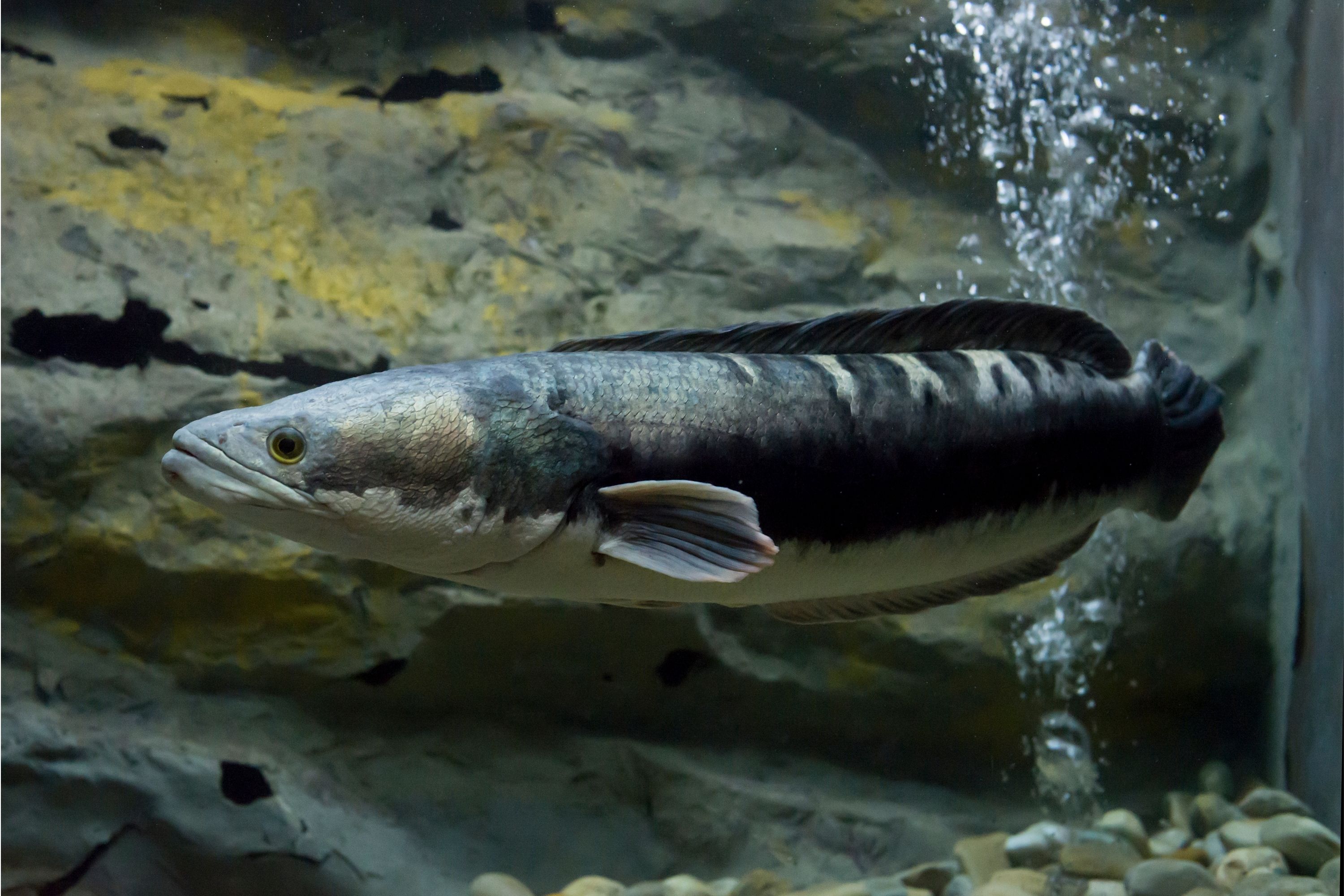Giant snakehead
(Channa micropeltes)

Description
Channa micropeltes, giant snakehead, giant mudfish or toman harimau, is among the largest species in the family Channidae, capable of growing to 1.5 m (4.9 ft) in length and a weight of 20 kg (44 lb). It is native to the fresh waters of Southeast Asia (South Indian populations are now regarded as a separate species, C. diplogramma), but has also been introduced elsewhere, where considered invasive. The young of the C.micropeltes are red in color, with orange and black lateral stripes appearing after about two months. As the giant snakehead matures, it loses its stripes and redness, and instead develops a bluish-black and white pattern on its upper body. Juveniles sold in the aquarium fish trade are commonly called "red snakeheads". They can get up to 1.5 m (4.9 ft) long and a weigh 20 kg (44 lb). The species has the ability to crawl onto land and breathe air, although they are only able to do this in muddy or swampy areas, hence the nickname "mudfish". Its ability to breathe air using a primitive lung located just behind the gills allows it to survive in stagnant water where oxygen levels are low, by coming to the surface and taking a small gulp of air. It also enables the snakehead to travel short distances on land, although it is unable to hunt while on land, as it cannot support itself at all with its small fins in comparison to its large body. In Malaysia and Singapore, they are known locally as the toman, while in Indonesia they are called gabus or haruan (not to be confused with another species of smaller snakehead known as the common snakehead also called haruan), and are cultured in fish ponds and reservoirs as game fish because they put up a strong fight when hooked. The giant snakehead is also a good fish to eat, and is often served in Chinese restaurants. C. micropeltes is found in Southeast Asia, Malay Peninsula, and Indonesia. It used to be believed to have an oddly disjunctive distribution, inhabiting both Southeast Asia and southwest India, about 2,500 km (1,600 mi) apart. The Indian population was speculated to be from an early human introduction, prior to the 19th century. In 2011, the Southeast Asian and Indian populations were found to be separate species, with the latter correctly named C. diplogramma (leaving C. micropeltes for the Squtheast Asian population). This fish is reported to be highly suitable for culture in cages or ponds in combination with tilapia.
Taxonomic tree:







